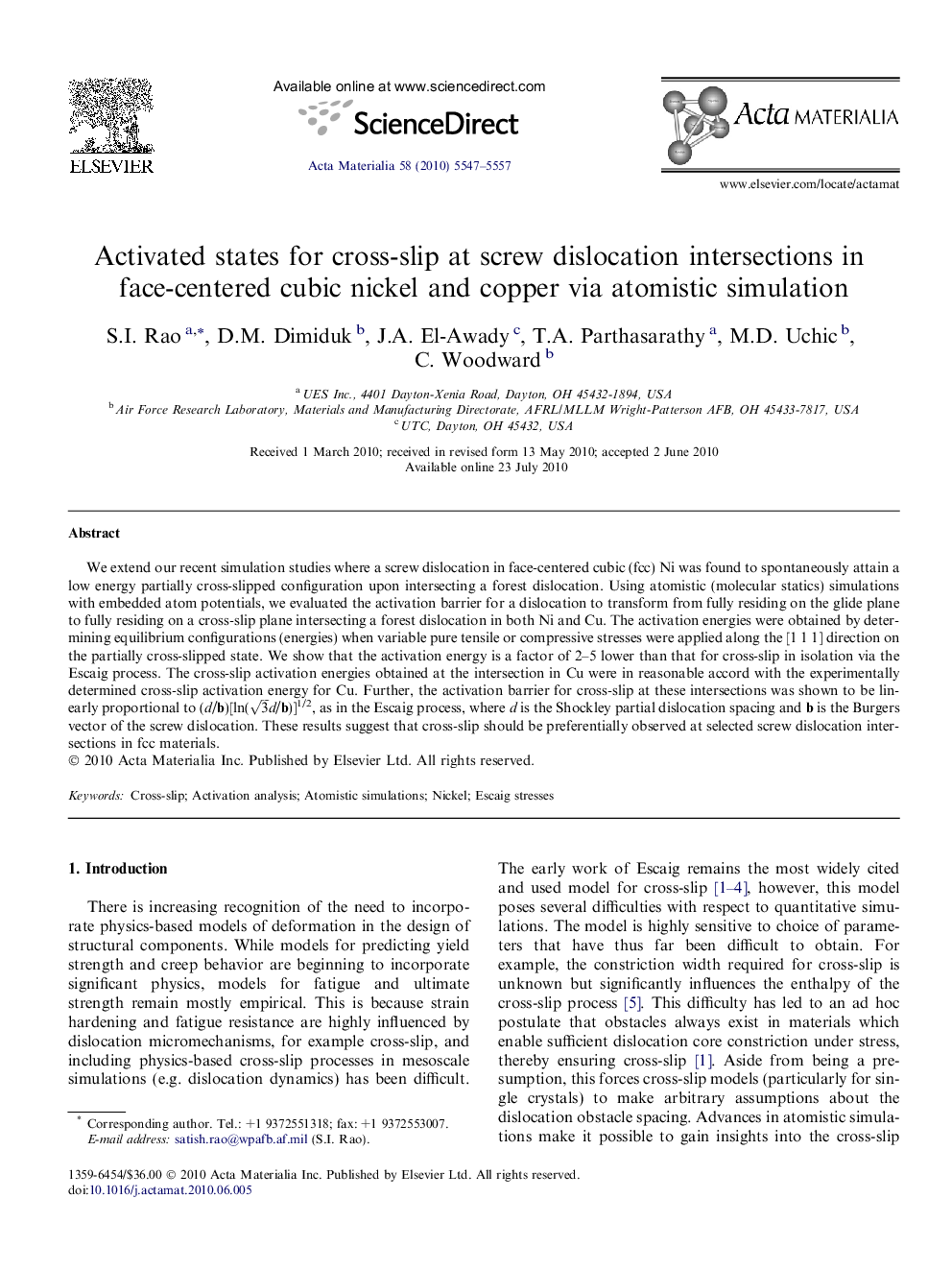| Article ID | Journal | Published Year | Pages | File Type |
|---|---|---|---|---|
| 10620694 | Acta Materialia | 2010 | 11 Pages |
Abstract
We extend our recent simulation studies where a screw dislocation in face-centered cubic (fcc) Ni was found to spontaneously attain a low energy partially cross-slipped configuration upon intersecting a forest dislocation. Using atomistic (molecular statics) simulations with embedded atom potentials, we evaluated the activation barrier for a dislocation to transform from fully residing on the glide plane to fully residing on a cross-slip plane intersecting a forest dislocation in both Ni and Cu. The activation energies were obtained by determining equilibrium configurations (energies) when variable pure tensile or compressive stresses were applied along the [1Â 1Â 1] direction on the partially cross-slipped state. We show that the activation energy is a factor of 2-5 lower than that for cross-slip in isolation via the Escaig process. The cross-slip activation energies obtained at the intersection in Cu were in reasonable accord with the experimentally determined cross-slip activation energy for Cu. Further, the activation barrier for cross-slip at these intersections was shown to be linearly proportional to (d/b)[ln(3d/b)]1/2, as in the Escaig process, where d is the Shockley partial dislocation spacing and b is the Burgers vector of the screw dislocation. These results suggest that cross-slip should be preferentially observed at selected screw dislocation intersections in fcc materials.
Related Topics
Physical Sciences and Engineering
Materials Science
Ceramics and Composites
Authors
S.I. Rao, D.M. Dimiduk, J.A. El-Awady, T.A. Parthasarathy, M.D. Uchic, C. Woodward,
